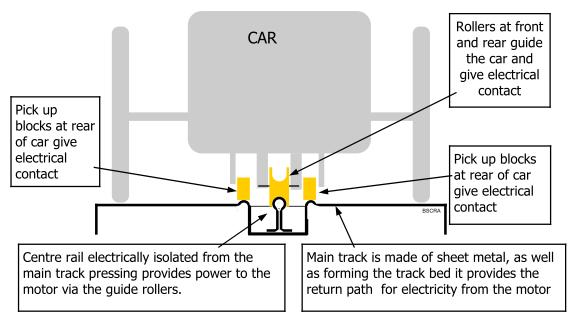
SLOT RACING HISTORY -
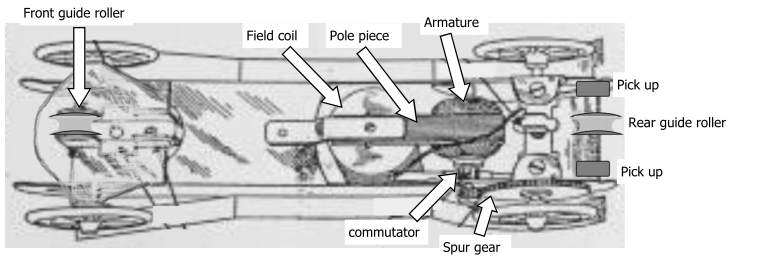
How do the run?
In 1991 Lionel produced a limited run of reproductions of the original sets.
Here’s gigeastman’s video of a repro set running.
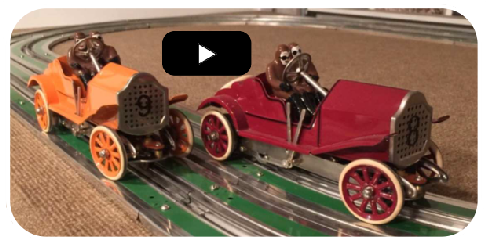

gigeastman’s video
The Motor
The diagram shows the the type of motor used in the Lionel cars. This is a typical
motor of the period. The armature with its windings, commutator and brush gear were
similar to modern motors except it had more poles. However, the magnets were quite
unlike modern slot car motors. Rather than the pair of permanent magnets found
in modern can motors, in front of the armature the Lionel motor had a single electromagnet
-
What happens if the dc power to the motor is reversed? In a permanent magnet motor, the current through the arm is reversed but the magnets stay the same so the motor goes backwards. In these field magnet motors, the current through the arm and through the field coil is reversed so the motor still goes forwards.
What happens if the ac power is applied to the motor? In a permanent magnet, the current through the arm is reversed frequently so the motor tries to go first forward then backwards and ends up going nowhere and getting hot. In these field magnet motors, the current through the arm and through the field coil is reversed at the same time so the motor still goes forwards.
The Lionel motor has laminated pole pieces which are doing the same job as the pressed pole pieces in open frame motor.
The armatures were mounted in what we’s now call a sidewinder position with pinion and spur gear drive to the back axle.
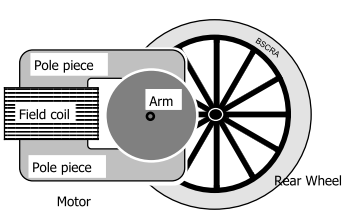
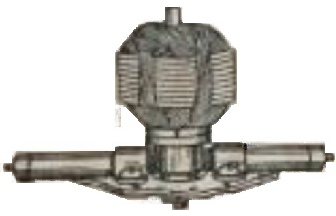
armature
brush
brush
Lionel armature and brush holders
Power
The cars could be powered batteries or by a transformer running from mains electricity. Only a minority of homes in the US had mains electricity during this period, so battery power would have been widely used. The transformers were just that, they produced ac. Today converting electricity from ac to dc is cheap and easy, but back then rectifier technology was in its infancy. So a motor that would run on both ac and dc would be important, but of course modern slot car motors all run on dc (even those where ac is supplied to the track).
Speed control
The original Lionel diagram doesn’t show any controllers, so how was the speed controlled?
For tracks using batteries, speed could be changed by connecting a different number of cells. The Lionel instructions show how various combinations of cells to give between 12 and 20 volts.
For tracks using transformers, speed could be changed by connecting a different transformer voltages. A contemporary Lionel “toy transformer” could be connected to give 3, 5. 8. 12 . 17 and 20 volts.
It was possible to connect a controller. The contemporary Lionel controllers were operated by turning a large knob, rather like a modern model railway speed controller . That rather lacked the rapid response possible with the hand held triggers or plungers we are used to seeing on more modern slot cars. However, turning a knob was a lot quicker than swapping round wire connections on batteries or transformers!
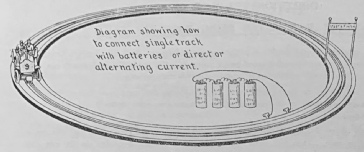
Battery Connection to a single lane
Copyright © 2021 British Slot Car Racing Association All rights reserved
This includes some original 1912 Lionel illustrations no longer in copyright
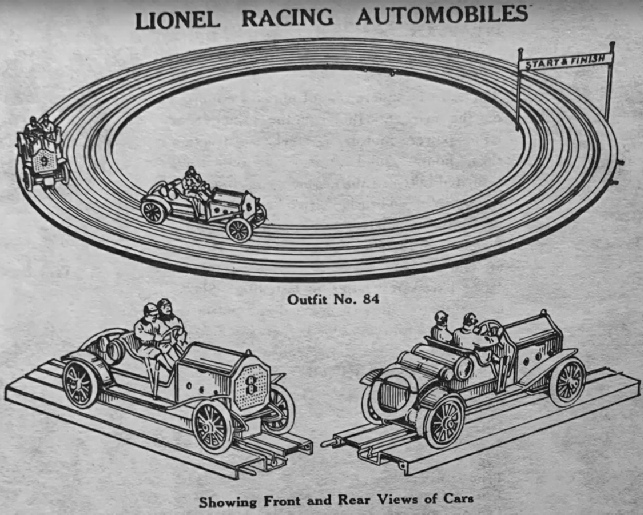
How did the guides work?
The diagrams show how they were guided and picked up their power. It’s up to you
the reader to decide if you think that’s a slot car.
Modern slot cars just have
the guide at the front, so the rear of the car can hang out on corners. The Lionel
cars had guide rollers front and rear so always went round in line with the slot.
Modern slot cars just have separate rails either side of the slot. Lionel cars the pick ups on either side of the slot connected together and the second pick up is from the central rail via the front and rear rollers. This means they’ll go forward whichever way round you put them in the slot unlike modern dc systems where the car goes backwards if put in the slot the backwards.
.
In 1912 Lionel put electric racing car sets on the market, about 1200 were produced by 1916, a number of these sets survive.
These are claimed to be the earliest slot cars. There are earlier motorised model cars, some of the earlier cars were not slot cars, the evidence for the others is sketchy. A reasonable number of these Lionel cars survive, so they can be described in detail.
The cars came in different colours but are all the same mechanically. Lionel’s illustration (right) shows “outfit No 84”, two separate single lane tracks and two cars. Straight track sections as well as the two bend radii were made.
Lionel’s cars used their existing electric motors which were already in production
for their model railways. Apparently the size of the existing motor was the reason
for the size of the cars -
